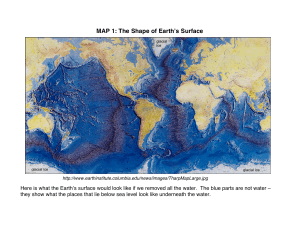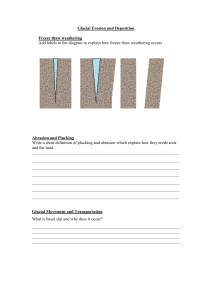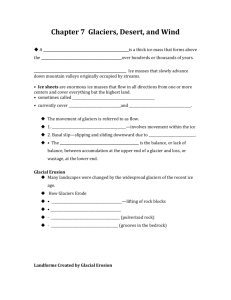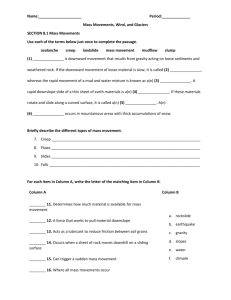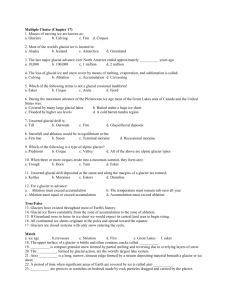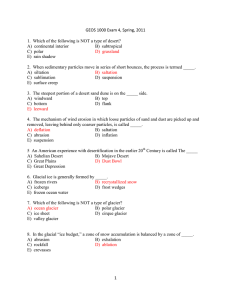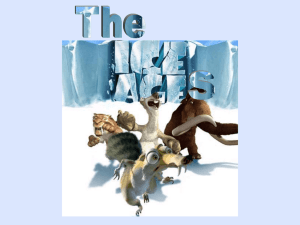Geos 1000 Quiz 6
advertisement
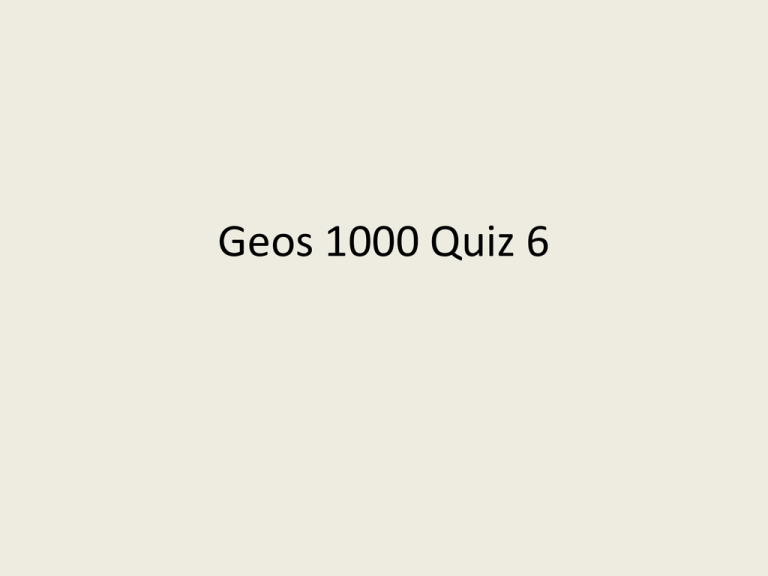
Geos 1000 Quiz 6 1. When sedimentary particles move in series of short bounces, the process is termed _____. A) siltation B) saltation C) sublimation D) suspension 2. The steepest portion of a desert sand dune is on the _____ side. A) windward B) top C) bottom D) flank E) Leeward (slip face) 3. The mechanism of wind erosion in which loose particles of sand and dust are picked up and removed, leaving behind only coarser particles, is called _____. A) deflation B) saltation C) abrasion D) inflation E) suspension 4. A _____ dune, shown in the figure below, forms from shifting wind directions and abundant sand. A) B) C) D) E) barchan transverse longitudinal parabolic star 5. An American experience with desertification in the earlier 20th Century, as shown in the figure, is called The _____ A) B) C) D) E) Sahelian Desert Mojave Desert Great Plains Dust Bowl Great Depression 6. Glacial ice is generally formed by _____. A) frozen rivers B) recrystallized snow C) icebergs D) frost wedges E) frozen ocean water 7. In the glacial “ice budget,” a zone of snow accumulation is balanced by a zone of _____. A) abrasion B) exhalation C) rockfall D) ablation E) crevasses 8. The glacial valley shown here was formed by ______. A) B) C) D) E) glacial deposition sea level rise climate change glacial erosion ablation 9. A glacier that begins on land and continues to move over sea water as a floating slab is called a(n): A. B. C. D. E. Ice sheet Valley glacier Cirque glacier Ice Shelf Moraine 10. A __________ is a stone that is shaped by wind abrasion A. Yardang B. Dune C. Ventifact D. Barchan E. Desert pavement

